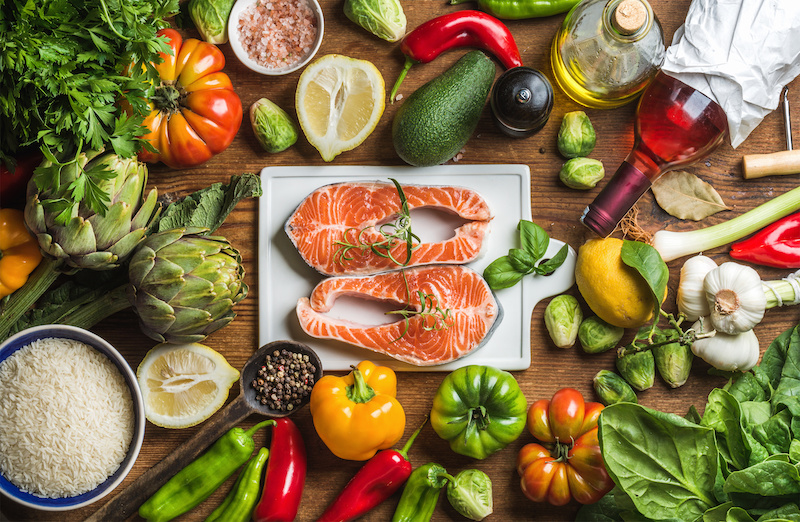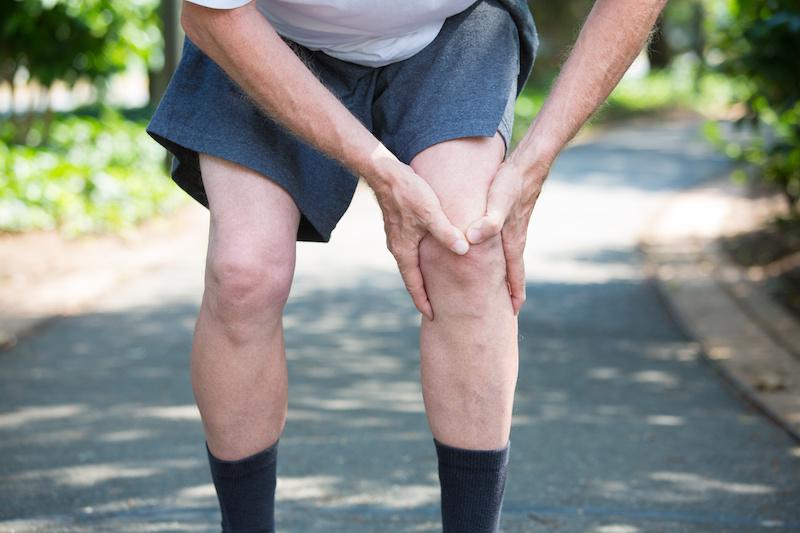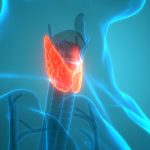As an osteoarthritis sufferer, living with pain, joint swelling, stiffness, compromised sleep and reduced quality of life is most likely a list of symptoms you know too well, especially if your condition has become chronic.
This website blog has been written to provide sufferers with some guidance on this condition as well as information on how osteoarthritis is managed naturopathically with a more natural approach.
Osteoarthritis is an incredibly common health concern, with over 10% of the population 60 and over affected. In fact, it is the most common musculoskeletal disorder in Australia. This article is designed to give you information on osteoarthritis, its underlying causes and how it develops, as well as dietary and lifestyle strategies to help you manage your osteoarthritis.
What is Osteoarthritis?
Osteoarthritis is a degenerative condition of the joints. In healthy joints, a thin layer of cartilage protects the ends of the bones, preventing friction and bone damage. In osteoarthritis, small cracks form in the cartilage, leaving the bone exposed and triggering inflammation in the joint, which worsens the breakdown of the joint cartilage. The lack of cushioning from the cartilage means the bones grind together when the joint is being used. Over time this leads to the bones forming spurs – small bony outgrowths on the sides of the joint. Osteoarthritis typically affects the load-bearing joints of the knees and hips, but it can also affect other joints, including those in the hands, ankles, spine, and lower back.
Risk Factors
- Age: Age is the number one risk factor for developing osteoarthritis, affecting up to 85% of people aged 75.
- Obesity: Higher body weight places increased pressure on the weight-bearing joints, causing faster cartilage break down in the joints.
- Diet: certain nutritional imbalances, such as low vitamin D and vitamin C, increase the risk of developing osteoarthritis.
- Gender: Women are more likely to develop osteoarthritis and are also more likely to experience more severe symptoms. There are hypotheses that the loss of ovarian oestrogen production after menopause is implicated here, but studies so far haven’t been conclusive.
- Genetics: a family history of osteoarthritis increases your risk.
- Joint overuse and injury: This can include occupational repetitive movement, including heavy lifting or extended periods of standing. A history in particular sports can also be a factor.
- Misalignment of the hips, knees or ankles may increase the risk of osteoarthritis.
Symptoms
The common symptoms of osteoarthritis include:
- Pain: the pain in osteoarthritis can often be asymmetrical – e.g. one knee might have significant pain, whilst the other might be virtually pain free.
- Joint stiffness which is worse after resting. This stiffness may also be accompanied by reduced range of motion.
- Swelling in the joints, particularly after physical activity
- Muscle weakness in localised area
- Clicking or cracking sounds in affected joints
- Bone spurs – small bony growths that can feel like hard bumps on the side of affected joints
The Role of Collagen
It might surprise you to learn that collagen is the most abundant protein in the body. In fact, there are at least 28 different types of collagen in the body that help to provide stability, elasticity and strength to tissues, organs and joints. Type 1 collagen is the strongest and most abundant form, and is the type found in tendons, ligaments, bone, and cartilage. Collagen adds strength to the tendons and ligaments, which means stable, healthy joints. It is constantly being broken down and reformed, however, in osteoarthritis this process is disrupted. The breakdown of cartilage outpaces its formation, leading to an overall degradation of cartilage in the joints. This is why nutritional support can make such a big difference in osteoarthritis – by supplying ample substrate for producing collagen and cartilage, we can help to mitigate the underlying processes contributing to osteoarthritic pain.
Treatment Strategies for Osteoarthritis
A focus on symptom relief is often the first treatment aim, mainly pain and inflammation however diet is something you can commence at home for life.

Dietary Strategies
Reduce intake of Inflammatory Foods
Because of the role of inflammation in osteoarthritis, it’s important to reduce foods that trigger or worsen inflammation. The foods listed below should be reduced or eliminated from your diet, as they can increase inflammation.
- High sugar foods: sugar, maple syrup, rice malt syrup, cakes, pastries, cookies, chocolate, lollies. Be wary of processed “healthy” treats such as protein balls, protein bars, muesli, and the like. Many of them still contain very high amounts of sugar.
- Trans fatty acids: found in frozen chips, frozen pizza, pastries, fried foods
- Highly refined carbohydrates: white bread, white rice. Instead, choose whole grain and sourdough varieties (proper sourdough, not the type in plastic in the supermarket)
- Food intolerances: if you have an intolerance to a particular food, it needs to be eliminated completely from your diet. Be sure to read food labels carefully to prevent accidental exposure. Common food intolerances include wheat/ gluten, dairy, and soy.
- Caffeine and alcohol intake should also be reduced, as these can both increase inflammation.
Reduce Intake of Nightshades
Foods from the Nightshades family can worsen osteoarthritis symptoms in some people. Foods in this family include tomatoes, eggplants, potato, capsicum, and goji berries. Tobacco is also part of the Nightshades family – if you smoke cigarettes, consider if now is the time to quit.
I mostly prefer to include nightshades for the majority of my clients and adhere to the beautiful, healthy foods of an authentic Mediterranean diet. You will also receive a handout on this scientifically validated way of eating if you are a naturopathic client of the clinic.
Increase intake of collagen-rich foods
As discussed above, collagen is vital for joint health, and we need to be eating plenty of substrate for collagen synthesis. Collagen is abundant in foods such as bone broth, fish with skin on, chicken, eggs. For vegans, the following foods are high in the amino acids required for the body to produce collagen: tofu, black beans, kidney beans, pumpkin seeds, chia seeds, cashews.
Increase intake of antioxidant-rich foods
Antioxidants are incredibly important for managing osteoarthritis, as oxidative stress is a significant contributor to the severity of osteoarthritis symptoms. Foods rich in antioxidants should be included in the diet to help improve antioxidant status. This includes plenty of fresh fruits and vegetables in a variety of colours. many of the antioxidants in fruits and vegetables are what gives the food its pigment.
- Red fruits and vegetables – contain compounds such as lycopene and anthocyanins: Tomatoes, capsicum, strawberries, cherries, beetroot, radish, chillies, radicchio, rhubarb, raspberries, cranberries
- Orange fruits and vegetables contain compounds such as beta-carotene: Oranges, capsicum, pumpkin, apricots, carrots, papaya, persimmons, mangoes, sweet potatoes
- Yellow and light green fruits and vegetables contain compounds such as carotenoids: Capsicum, kiwi fruit, corn, pineapple, lemons, cabbage, celery, limes, pears, avocado, fennel, onion
- Dark green fruits and vegetables contain compounds such as lutein and zeaxanthin: Broccoli, Brussels sprouts, kale, bok choy, spinach, silver beet, asparagus, green beans, peas, leeks, artichokes
- Purple fruits and vegetables contain compounds such as anthocyanins and phenols: Cabbage, grapes, eggplant, onions, plums, blueberries, blackberries
- Prioritise non-starchy vegetables (i.e. choose broccoli or capsicum over potato, sweet potato, or other root vegetables).
- Eat plenty of leafy greens, like spinach, bok choy, silver beet, and dark green lettuce varieties
Increase intake of Omega-3 Fatty Acids
Omega 3 fatty acids have been found to help reduce inflammation and increase joint lubrication in osteoarthritis. Fatty fish such as salmon, as well as hemp seeds, flax seeds, and walnuts are all great sources of omega 3 fatty acids.
Lifestyle Strategies
Daily Exercise
Daily physical activity is important for health, but should be balanced with rest, particularly during pain flares. Choose activities that don’t worsen your symptoms – some options might include swimming or water aerobics, walking on flat surfaces, tai chi, or other gentle exercises. Resistance training can also be beneficial, as increasing the strength of the muscles surrounding joints can help to reduce pressure on the joint. If you haven’t tried resistance training before, consider seeing an exercise physiologist or qualified trainer to help you begin safely.

Consider Upgrading Your Footwear
Comfortable, supportive footwear can make a big difference to pain levels, particularly if you are in an occupation that requires extended periods of standing. Avoid shoes that are very flat with little sole support. Getting fitted properly at a shoe store can make a big difference!
Massage
Consider booking yourself in for regular massages, which can help to relieve pain and stiffness and improve daily functioning.
Nutritional Supplements
Each person is unique based on symptoms, medications and other health conditions which is why it is important not to self-prescribe. As a client of Performance in Health Wellbeing clinic, a prescription will be provided to you that considers all of these things, however it may include some of the following following:
Curcumin
Collagen & Silicon
Vitamin C
Magnesium, Calcium and Vitamin D
High strength fish oils
Herbal Medicine
There are many, many different herbal medicines available that can help with osteoarthritis. Some of the actions of herbs that might help include:
- Anti-inflammatory
- Analgesic (Pain)
- Antioxidant
- Circulatory stimulant (improve circulation to the joints)
Sleep and mood
When living with pain and lack of mobility, it can be more challenging to sleep. Often, herbs to support a deeper sleep as we reduce pain can also make up part of your treatment plan as can herbs to improve day-time energy and mood.
If you seek a more natural approach to support your osteoarthritis, please contact me on [email protected] or book an initial consultation via the contact tab on the website here.
References
BioMedica Nutraceuticals. (2020). Supporting connective tissue health with collagen builders. BioMedica Nutraceuticals.
Hechtman, L. (2012). Clinical naturopathic medicine. Elsevier Australia.
Thomas, C. (2018). The naturopath’s guide to osteoarthritis: A focus on the herbal approach for managing osteoarthritis. The Herbal Extract Company of Australia.










